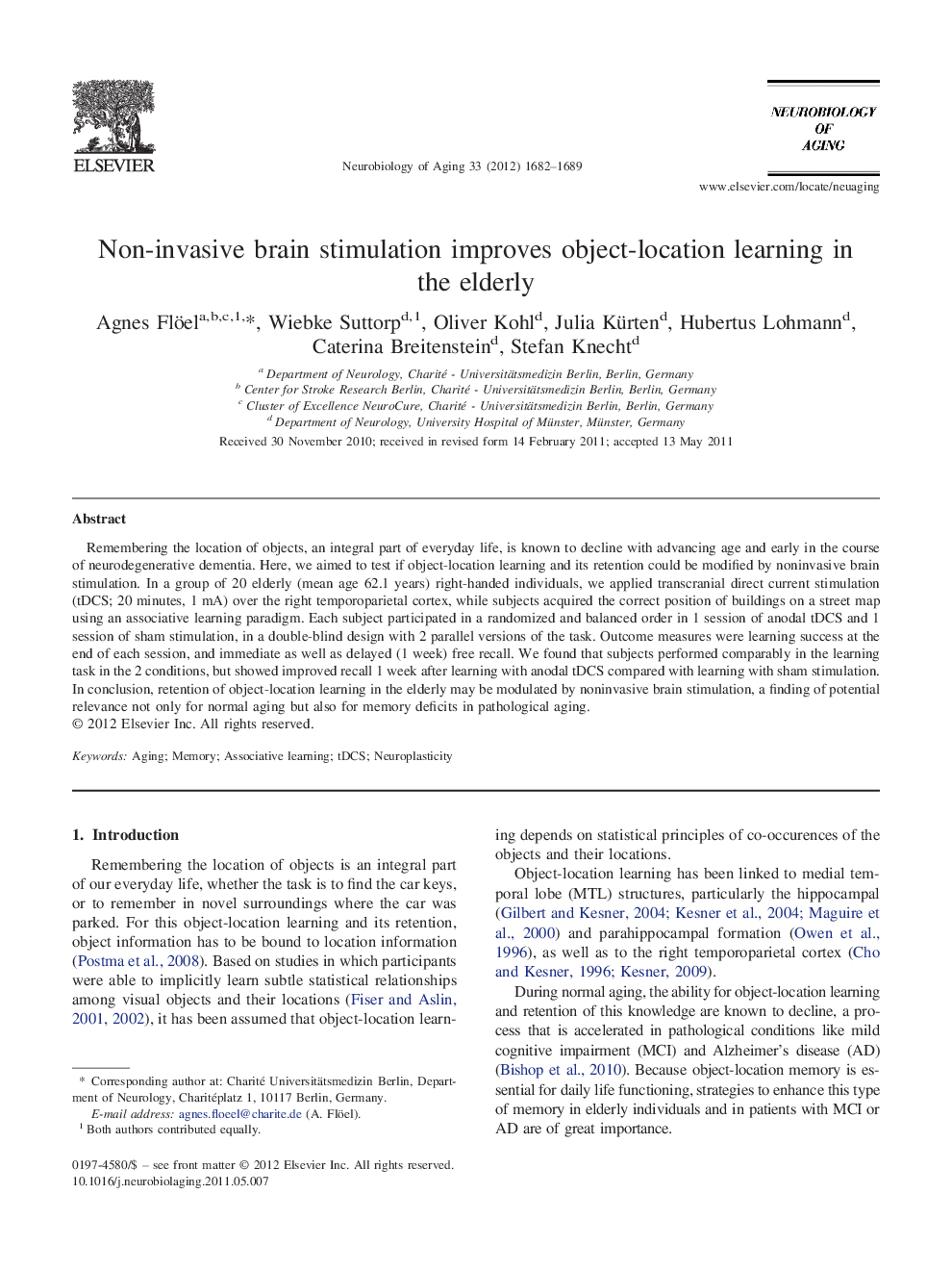| Article ID | Journal | Published Year | Pages | File Type |
|---|---|---|---|---|
| 6808397 | Neurobiology of Aging | 2012 | 8 Pages |
Abstract
Remembering the location of objects, an integral part of everyday life, is known to decline with advancing age and early in the course of neurodegenerative dementia. Here, we aimed to test if object-location learning and its retention could be modified by noninvasive brain stimulation. In a group of 20 elderly (mean age 62.1 years) right-handed individuals, we applied transcranial direct current stimulation (tDCS; 20 minutes, 1 mA) over the right temporoparietal cortex, while subjects acquired the correct position of buildings on a street map using an associative learning paradigm. Each subject participated in a randomized and balanced order in 1 session of anodal tDCS and 1 session of sham stimulation, in a double-blind design with 2 parallel versions of the task. Outcome measures were learning success at the end of each session, and immediate as well as delayed (1 week) free recall. We found that subjects performed comparably in the learning task in the 2 conditions, but showed improved recall 1 week after learning with anodal tDCS compared with learning with sham stimulation. In conclusion, retention of object-location learning in the elderly may be modulated by noninvasive brain stimulation, a finding of potential relevance not only for normal aging but also for memory deficits in pathological aging.
Related Topics
Life Sciences
Biochemistry, Genetics and Molecular Biology
Ageing
Authors
Agnes Flöel, Wiebke Suttorp, Oliver Kohl, Julia Kürten, Hubertus Lohmann, Caterina Breitenstein, Stefan Knecht,
